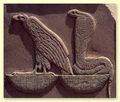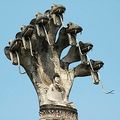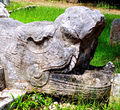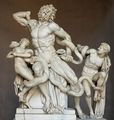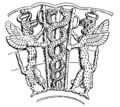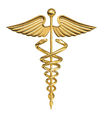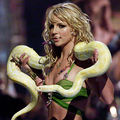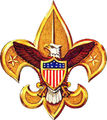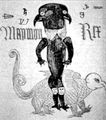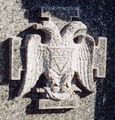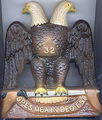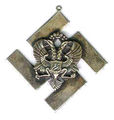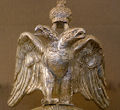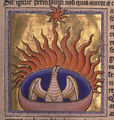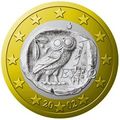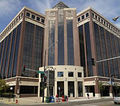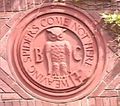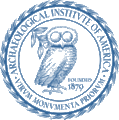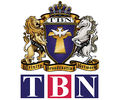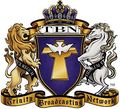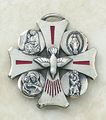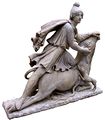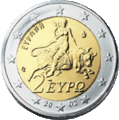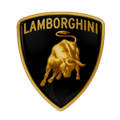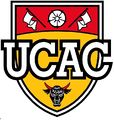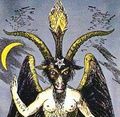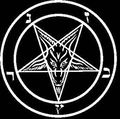911:Occult symbolism X
Site menu:
- Occult symbolism Intro
- History of oppression
- Social terrorism
- Economic terrorism
- Occult symbolism pages:
- Introduction to symbolism
- Part I (Egyptian mythology, Pyramid, All-seeing eye, Obelisk)
- Part II (Astrology)
- Part III (Stars)
- Part IV (Cross, Rods, Awen, Thunderbolt, Bell, Shell)
- Part V (Occultism)
- Part VI (Circles, Infinity, Spirals)
- Part VII (Deities)
- Part VIII (Colors)
- Part IX (Alphabets)
- Part X (Animals, Insects, Arachnids)
- Part XI (Plants)
- Part XII (Life, Death, Sexuality)
- Part XIII (Alchemy)
- Part XIV (Masonic symbolism)
- Part XV (Masonic places)
- Part XVI (Hand signs)
- Part XVII (Occult Media Programming)
Animals
- See also: Heraldic beasts
Dragon
- See also:
- Order of the Dragon (German-Romanian-Hungarian)
- Category: Dragons
- European dragon
- video: "When Dragons Ruled the World"
- "Dragons in the Bible" (see: Leviathan & Job 41)
Vatican art
Note: the Crossed keys and Papal tiara.Art at the entrance to the City in London.
See also: Masonic cities
Serpent
- See also:
- Energy (vortex-rope-helix) symbolism:
- Geometry: Spirals
- Life cosmos: DNA
- Axis mundi ("world axis")
- Kundalini energy
- "Kundalini (Sanskrit), literally "coiled". In Indian yoga, a "corporeal energy" - an unconscious, instinctive or libidinal force or Shakti, envisioned either as a goddess or else as a sleeping serpent coiled at the base of the spine, hence a number of English renderings of the term such as serpent power." [28]
- Silver cord
- Intertwined/twin serpents
- Secret societies:
- Human history: Brotherhood of the Snake
- Book and Snake - a secret society at Yale University.
- Snake worship
- Snake charmer (two-fold hypnosis act: charmer-to-snake and snake-act-to-crowd)
- Snake handling
- Feathered serpents (and other reptiles)
- To research: symbolic meaning: duality symbolism: earth/heaven, below/above, ...
- Feathered dinosaurs (see also: Origin of birds)
- Quetzalcoatl (a Meso-American feathered/plumed serpent figure) (see also: Temple of the Feathered Serpent)
- Chichen Itza (On the Spring and Autumn equinox, at the rising and setting of the sun, the corner of the structure casts a shadow in the shape of a plumed serpent [29]- Kukulcan, or Quetzalcoatl - along the west side of the north staircase. On these two annual occasions, the shadows from the corner tiers slither down the northern side of the pyramid with the sun's movement to the serpent's head at the base)
- Ophiuchus constellation (also called "Serpentarius", meaning "serpent-holder". See also: snake charmer.)
- "Ophiuchus is depicted as a man grasping a serpent" ... "Of the 13 zodiacal constellations (constellations that contain the Sun during the course of the year), Ophiuchus is the 13th and] only one not counted as an astrological sign." ... "RS Ophiuchi is part of a class called recurrent novae, whose brightness increase at irregular intervals by hundreds of times in a period of just a few days. It is thought to be at the brink of becoming a type-1a supernova." [30]
- toresearch: Manly P. Hall: claims the Serpent, Scorpion, and Phoenix have similar symbolic meanings.
- See also: Plasma cosmos: Technical factors of astrology
- Ancient egypt ("Kemet")
Osiris and the cobra goddess Wadjet, Hermopolis coffin. [1]
[4]
Note: the primal eye tunnel.Set subjugates the snake Apep.
See also: "Apep, Water Snake-Demon of Chaos, Enemy of Ra..."
To research: Snake-priesthood counter-culture?
- Ancient/modern Asia
Gigantic naga protecting Buddha amongst the other sculptures of Bunleua Sulilat's Sala Keoku.
- Ancient South America
Quetzalcoatl - the Meso-American feathered/plumed serpent figure [9].
serpent at the Temple of the Feathered Serpent
- Ancient Middle-east (Babylonian)
Zurvan, Babylonian deity of "time, space and fate".
See also: [10].(see previous)
See also: "In the Coils of the Serpent".
- Ancient Mediterranean (Minoan, Greek, ...)
The Minoan Snake Goddess from Crete. See also: [11]
- Ancient Rome
"Laocoön and His Sons" - a marble sculpture from Rhodes (between 160 BC and 20 BC), now in the Vatican Museums, Rome. See also: Laocoön.
Bronze hand of the Roman mystery cult of Sabazios/Dionysus (see also the Ancient Greece mystery schools: Dionysian Mysteries and the later Eleusinian Mysteries and Orphic Mysteries).
It dates from the late Roman Empire, when all forms of divination from scrying to astrology, flourished.
Note: the serpent/dragon/lizard head, the reverse awen handsign, the cow/bull above the altar, and something that resembles a human in a pupa.
- Scandinavian (Vikings...)
Ouroboros type serpent with the Runic inscriptions [12]
Note: See Norse mythology:Cosmology
- Recent history
- Kepler Drawing of SN 1604.png
Drawing of the Ophiuchus constellation (also called "Serpentarius", meaning "serpent-holder") by Johannes Kepler (the suspected murderer of Tycho Brahe).
- Utrecht Psalter.jpg
Utrecht Psalter (816-835) [15]
Note: Besides the serpent symbolism note the mushroom|entheogen shapes and the [[911:Entheogens#Religious_text_references story of the forbidden fruit] (from the Book of Genesis) - Paris psalter.jpg
Paris Psalter (10th century) [16]
- Entheogen culture 003.jpg
Adam and Eve with serpent entwined Psilocybe mushroom (caduceus), Italy, Abbey of Montecassino; circa 1072; British Library.
- Entheogen culture 003b.jpg
Fresco at Abbaye de Plaincourault Mérigny, France [17].
- Salamander mushroom trip.jpg
"14th century painting from an alchemical text showing a man intoxicated on Amanita muscaria (?) mushrooms." ... "Next to it another salamander roasts upon the fire in much the same way as the philosopher in the Book of Lambspring roasts a salamander on a fork in a fire." [18]
"Cult of the Serpent" tee shirt being sold at Macy's department stores.
Caduceus
- Various notes
- "Typically depicted as a short herald's staff entwined by two serpents in the form of a double helix, and sometimes surmounted by a winged sun." It seems that in the past the "Caduceus" symbolism was represented by one serpent and later by two serpents.
- Now also used as a symbol for harmful healthcare services.
- See also:
Ningizzida, a Mesopotamian deity of the underworld. "He is the patron of medicine, and may also be considered a god of nature."
Note: the 2 griffins (or gryphons).The devil-goat God Baphomet with the Rod of Asclepius on it's lap
The archetypical medical symbol.
Note: the Winged sun symbolismBillings Area Health Sciences Information Consortium (Bahsic), an organization providing literary resources to the medical field.
Note: the 10-pointed star.Medical Advisory Board
Note: the ominous syringeWorld Health Organization - an agency of the United Nations.
Note the variation of the Marian star in the background, which can be found on all U.S. Emergency medical technician (EMT) patches/vehicles/etc.
"The Caduceus Project", a bronze sculpture at the Jesuit St. Louis University made by James Muir.
(see previous) [19]
Dockers - clothing company
Movie poster for the 2006 film Snakes on a Plane
Biscione
- Biscione: "(Italian for ‘large grass snake’), also known as the Vipera (‘viper’ or in Milanese as the Bissa), is a heraldic charge showing in Argent an Azure serpent in the act of consuming a human; usually a child and sometimes described as a Moor. It has been the emblem of the Italian Visconti family for around a thousand years. Its origins are unknown. However it has been claimed that it was taken from the coat of arms of a Saracen killed by Ottone Visconti during the crusades. The biscione appears also in the coats of arms of the House of Sforza, the city of Milan, the historical Duchy of Milan and Insubria. It is also used as a symbol or logo by the football club Inter Milan, by Alfa Romeo and, in a version where a flower replaces the child, by Fininvest."
House of Visconti emblem ("Vipera Visconti").
Flag of the Duchy of Milan and Insubria.
Note: the checkerboard, the Eagles and the man-eating Biscione serpents.Automaker Alfa Romeo
Note: the red-on-white cross is reminiscent of the Knights Templar emblem.
Ouroboros
- Various notes:
- Alternative names: Ourorboros, Oroborus, Uroboros or Uroborus.
- Symbol of the infinite cycle of death/rebirth, creation/destruction, inhalation/exhalation, contraction/expansion.
- See also:
- Ouroboros non-logos. The following Masonic images all have show an Ouroboros making a circle around all the other symbols in the image.
Theosophical Society seal, with a Swastika energy symbol, Ankh and Ouroboros symbol.
Ouroboros non-logos:
Tapestry in the Vatican. Note: the pyramid with the all-seeing-eye.
(1)GREGORIUS XIII PONT(IFEX) OPT(IMUS) MAXIMUS (2)ANNO RESTITUTO MDLXXXII (Year of Restitution 1582)
Note:The above papal medal of Pope Gregory XIII, designed by L Parm, is dated 1582, marking the year of the Gregorian calendar reform. On the reverse of the medal is a winged dragon / serpent encircling a ram's head. The ram's head is also a satanic symbol, and is frequently associated with the Egyptian deities, such as the god Amon (Amoun, Ammun, Ammon), the king of all gods, who was also regarded as the sun god, and Khnum, who created mankind on his potter's wheel from the mud of the Nile.[20]
- Ouroboros in logos:
Vodafone
Note: also a 6
Lilith
- Various notes:
- Alternative names: Lilitu, Lilit
- Mythological female Mesopotamian storm demon associated with wind and was thought to be a bearer of disease, illness, and death.
- First appeared in a class of wind and storm demons or spirits as Lilitu, in Sumer, circa 4000 BC.
(c. 1892)
Lilith, a painting by British writer and painter John Collier.In this live concert, was Britney Spears being portrayed as Lilith?
Various serpents
Nazi anti-partisan badge
Former BT Telecom logo (now BT Group).
Note: look at the red swirling line going from the bottom-right to the upper-left.
Bird
- Various notes:
- See also: Winged sun, New Acropolis: Wing symbolism
Bird egg
- Various notes:
- See also: Cosmic egg
- Upside-down eggs:
Eagle
- Various notes:
- See also: Imperial Eagle, Reichsadler, Roman Aguila, French Imperial Eagle.
- See also: Flags with eagles
The The Great Seal of the United States
Note: the 13 fasces , 13 (5-pointed) stars, 13 stripes on shield, 13 leaves, 13 olives, 13 letters in "E PLURIBIS UNUM", 32 feathers on left wing (32 degree mason), 33 feathers on right wing (33 degree mason)Flag of the Duchy of Milan and Insubria
Note: the checkerboard and the man-eating Biscione serpent.The Boy Scouts of America emblem
Note: the two inverted pentagrams and the Fleur-de-lisSaab - a Swedish automaker
Allianz logo history
Double-headed Eagle
- Various notes:
- The double-headed eagle is one of the most important symbols in Freemasonry. It is a masonic symbol that can be traced back to Babylon.
- In Ancient Egypt:
- Double-headed eagle in masonic imagery:
Double-headed eagle outside unknown Masonic lodge.
Note: "32" in pyramid for the 32nd degree, also masonic Maltese Cross.Members of a secret Vatican order with double headed eagles on their standards.
- Double-headed eagle symbolism in Russia. It has been the Russian state insignia since the late 1400’s.
Double-headed eagles on the Kremlin. The Russian tsars adopted the double headed symbol both to position themselves as successors to the Byzantine state and to likewise symbolize their dominion over the west (Europe) and the east (Asia).
Also on the Kremlin building.
Double-headed eagle in Russia.
Note: 6-pointed star below eagleDouble-headed eagle atop a gate in St. Petersburg, Russia
Note: the double square
- Double-headed eagle in Byzantine history:
In Byzantine heraldry, the heads represent the dual sovereignty of the Emperor (secular and religious) and/or dominance of the Roman Emperors over both East and West.
Note: Crossed keysThe Austro-Hungarian Empire was a dual-monarchic union state in Central Europe from 1867 to 1918, dissolved at the end of World War I with a deadly Vatican-Jesuit-Masonic proxy-war.
National flag of Albania. The double headed eagle is a common symbol in heraldry and vexillology. Several Eastern European nations use this symbol today, having adopted this symbol from the Byzantine Empire.
- Double-headed eagle in the Vatican:
- Double-headed eagle in logo's:
American Police Force (hoax or fascist corporation?)
Phoenix
- Various notes:
- "In ancient Egyptian mythology and in myths derived from it, the phoenix is a mythical sacred firebird. Said to live for 500, 1461 or for 12594 years (depending on the source), the phoenix is a male bird with beautiful gold and red plumage. At the end of its life-cycle the phoenix builds itself a nest of cinnamon twigs that it then ignites; both nest and bird burn fiercely and are reduced to ashes, from which a new, young phoenix arises. The new phoenix embalms the ashes of the old phoenix in an egg made of myrrh and deposits it in Heliopolis ("the city of the sun" in Greek), located in Egypt. The bird was also said to regenerate when hurt or wounded by a foe, thus being almost immortal and invincible - a symbol of fire and divinity. Although descriptions (and life-span) vary, the phoenix became popular in early Christian art and literature as a symbol of the resurrection, of immortality, and of life-after-death. Originally, the phoenix was identified by the Egyptians as a stork or heron-like bird called a benu, (see Bennu), known from the Book of the Dead and other Egyptian texts as one of the sacred symbols of worship at Heliopolis, closely associated with the rising sun and the Egyptian sun-god Ra." [31]
- See also:
- Fire bird mythology
- Firebird in Slavic mythology
- Sun symbolism
- Phoenix (mythology)
- Masonic Interpretations of the Phoenix
- By Manly P. Hall The Secret Teachings of All Ages
Phoenix detail from the Aberdeen Bestiary. This is a 12th century English illuminated manuscript. [21]
Bestiaries were illustrated volumes which described elements of nature, especially animals.
"The natural history and illustration of each beast was usually accompanied by a moral lesson. This reflected the belief that the world itself was the Word of God, and that every living thing had its own special meaning." [22]Phoenix on top of the Kinkaku-ji temple (originally build in 1397), Kyoto, Japan. [23]
Sophiendukat (1616)
Note: the Jesuitical IHS symbol and the 911:Occult_symbolism#All-seeing_Eye all-seeing eye.Phoenixes on the Presidential Medal of Freedom
Owl
- Various notes:
- Owl of Minerva (See also: Minerva)
- Strix (or: "striga", "stirge")
- Moloch, Molech, Molekh, or Molek. Historically affiliated with cultures throughout the Middle East, including but not limited to the Jewish, Egyptian, Canaanite, and Phoenician cultures
- The Owl is in many cultures seen as a wise animal and it sees well in the dark. The 'global elite' consider themselves to have both these characteristics and claim thereby they deserve the right to rule.
- The Golden Owl more directly symbolizes the (pure as gold) primordial intellect as received through the Sun (the light).
- Strix (or: "striga", "stirge")
- Owl non-logo's:
Roads and trails around the White House make an owl shape.
Classical period (before Alexander the Great) Tetradrachm from Athens dating from around 5th century BCE. The owl represent the goddess Athena and the Hero is Heracles [25]
Owl on a 2002 Greek euro coin
The Owl on the upper right hand front corner U.S. one dollar bill.
Frost Bank Tower in Austin, Texas, US.
The owl is an integral and reoccurring theme in the Harry Potter series of books and films.
On building in Barcelona [26]
- Owl logo's:
National Press Club, who's members founded the Bohemian Club
Bohemian Club.
Founded by members of the National Press Club in 1872. The male-only members gather each July at a privately owned 2,700 acre redwood tree grove named Bohemian Grove, in Northern California.(see previous)
The 40 foot tall owl which the attendees call Moloch inside the Bohemian Grove during the annual ceremony known as the "Cremation of Care", in which a human sacrifice in effigy, representing "dull care" (cares of life) takes place each summer.Archaeology Institute of America (AIA, 1879)
ZF Friedrichshafen / Lemforder (automotive parts manufacturing)
Note: the Pyramid.
- The 6 golden Owls of the Leeds Civic Hall. This building houses the Leeds City Council and is located in Millennium Square, in Leeds, England. See: City States
The building houses the Leeds City Council and includes offices such as the Lord Mayor's room.
Note: All the Owls are perched on Obelisks- Side.JPG
The side of the building
The Leeds City Council coat of arms.
Note: 3 Owls, 3 stars (tristar, the 3 city states), helpless lamb (the public or "sheep"), Owls wearing crowns with 3 ornaments, blue background for Lodge, the crest motto: "pro rege et lege" ("for my king and lodge"). See also: [27].
Dove
- [Dove in the Biblehttp://www.biblegateway.com/keyword/?search=dove&version1=9&searchtype=all&limit=none&wholewordsonly=no]
Upside-down dove
Emblem of the "Christian" Trinity Broadcasting Network (TBN)
Logo of the Fourth Degree, the highest attainable degree in the catholic-masonic Knights of Columbus (KoC) order.
Seal of renowned Satanist Aliester Crowley's Ordo Templi Orientis (O.T.O.).
Bat
- Various notes:
- A bat is actually not a bird, but a flying mammal.
Bacardi (See their Caribbean Pirate murder/terror history, and the vampire bat bloodsuckers).
Crest of Royal Air Force No. 9 Squadron.
Rooster
- See the "Rooster" section in the Sun symbolism chapter.
Raven
- Various notes:
- See also: "New Acropolis: Raven symbolism"
Peacock
- Various notes:
- In Egyptian mythology the peacock tail patterns were associated with all-seeing eye - which represents the primal eye. In Egyptian mythology Argus was a traitor to Osiris. In Osiris's absence, Argus locked Isis (wife of Osiris) in his castle and then proclaimed himself king. When Osiris returned he learned of the ambitions of Argus and the kidnapping of his beloved wife. Argus had spies everywhere in the Kingdom of Osiris. A cure was placed upon Argus that from that day forward he would be a peacock and all his spies would be the peafowl's eyes. These eyes were placed in the bird's tail.
- (Greek mythology): Argus Panoptes: A fabulous being of antiquity, said to have had a hundred eyes (representing the stars of heaven). His eyes were transplanted to the peacock’s tail. He was a servant of the greek goddess Hera.
- "In Hinduism the Peacock is associated with Lakshmi who is a deity representing benevolence, patience, kindness, compassion and good luck. Similar to Lakshmi, the Peacock is associated with Kwan-yin in Asian spirituality. Kwan-yin (or Quan Yin) is also an emblem of love, compassionate watchfulness, good-will, nurturing, and kind-heartedness. Legend tells us she chose to remain a mortal even though she could be immortal, because she wished to stay behind and aid humanity in their spiritual evolution." [32]
- "In Babylonia and Persia the peacock is seen as a guardian to royalty, and is often seen in engravings upon the thrones of royalty. In Christianity the Peacock symbolism represents the “all-seeing” church, along with the holiness and sanctity associated with it. Additionally, the peacock represents resurrection, renewal and immortality within the spiritual teachings of Christianity. Themes of renewal are also linked to alchemical traditions to, as many schools of thought compare the resurrecting phoenix to the modern-day peacock." [33]
- The Yazidis consider Tawûsê Melek a benevolent angel who has redeemed himself from his fall and has become a demiurge who created the cosmos from the Cosmic Egg. After he repented, he wept for 7000 years, his tears filling seven jars, which then quenched the fires of hell. Some Christians, Muslims and others identify Tawûsê Melek as Lucifer or Shaytān (Satan). The Yazidis' cultural prohibition against uttering the word – saying God's name is blasphemy, as in Judaism – does not make the situation easier. Tawûsê Melek is "God's Angel", and this is how Yazidis themselves see him. (wikipedia)
- See also:
- Order of the Peacock Angel
- Adramelech
- In Egyptian mythology the peacock tail patterns were associated with all-seeing eye - which represents the primal eye. In Egyptian mythology Argus was a traitor to Osiris. In Osiris's absence, Argus locked Isis (wife of Osiris) in his castle and then proclaimed himself king. When Osiris returned he learned of the ambitions of Argus and the kidnapping of his beloved wife. Argus had spies everywhere in the Kingdom of Osiris. A cure was placed upon Argus that from that day forward he would be a peacock and all his spies would be the peafowl's eyes. These eyes were placed in the bird's tail.
- Logos:
MSNBC
Note: multi-color sun ray symbolism.
- Non-logos:
Peacocks and Pine cone at the Vatican.
Tawûsê Melek, the peacock angel.
Note: The Sun cross, the Seven rays (of Mithraism and the 12 eyes on his tail?)Roman mosaics in Paphos
Nelly Furtado (pop star)
Bull
- Various notes:
- Taurus (constellation)
- Taurus (astrology)
- Bull mythology
- Todo: Golden calf
- Todo: Mithraic Mysteries
- "The Bank of England was originally constructed above the ancient London Mithraeum (also called the "Temple of Mithras"), London at Walbrook, dating to the founding of Londinium in antiquity by Roman garrisons. Mithras was, among other things, considered the god of contracts, a fitting association for the Bank." [34]
- Whore of Babylon riding the beast
- Bible prophecy: Whore of Babylon
- Europa (mythology)
- "This statue, standing in front of the Winston Churchill building, refers to ancient mythology and depicts one the most ancient representation of Europa. Its based on a story where Zeus disguised himself as a white bull in order to seduce the princess Europa who was gathering flowers. When she approached the bull and got on its back, the bull seized the occasion to run away with her and eventually rape her (I’m giving you the non-censored version of the story). So the woman (who represents Europe) on top of this bull is about to get raped." [35]
- Bullfighting: The slaying of the bull by Mithras (Roman deity - with pre-Roman origins - who was born from a Cosmic egg) and the castration by a scorpion (Scorpio) in Roman mythology. This sacrificial tradition represents the domination of the 'elite' over the potentials of the 'common' people.
- Televised sport events are one modern variant of this occult tradition. The 'elite' know many people want to align themselves with the dominators (winners), not the suppressed (losers). They hypnotize and pacify people with simple systems of glorified male competition and domination. A politically harmless, commercial venting system for the boredom and anger of many people - especially 'lower-class' young males.
Non-logo's:
Roman Tauroctony of Mithras from ~200BC. Note also the castrating scorpion and the feasting dog and snake.
European Parliament statue in front of the Winston Churchill (a freemason) building.
See: Whore of BabylonWall street bull statue. The bull is used as a financial symbol, a bull market is a positive market and a bear market is a negative one.
In the film Crocodile Dundee, actor Paul Hogan hypnotizes a bull into submission using a handsign.
Logo's:
Red Bull GmbH
Note: the sun orb.Merrill Lynch - a global financial services firm founded in 1914
University of Calgary, Alberta, Canada.
Note: the 5-peddled rose and 5-pointed star.
Horse
- Various notes:
- Horses in mythology (in historical order):
- Mythological/historical horse symbolism:
Uffington White Horse, Oxfordshire, England
This motif was re-used for the Millennium Horse at Folkestone.
- Corporate logo's:
Porsche automaker
Note: the company is majority owned by the Porsche family and Piëch family
Pegasus
Tristar Pictures
Note: the pyramid and the name "tri-star".
Goat
- Various notes:
- See also: Pan
The devil goat-God Baphomet
- Corporate logos
Dodge ram logo
Dog
- Corporate logo's
Sirius Satellite Radio
Note: The brightest star in the night sky Sirius is also known colloquially as the "Dog Star", reflecting its prominence in its constellation, Canis Major
See also: Astro-mythology: Sirius.
Lion
Griffin
- Various notes:
- Griffin: A legendary creature with the body of a lion and the head and wings of an eagle.
- Ancient (todo):
Shedu
- Various notes:
- Shedu: Winged bulls and lions; both forms had the heads of human males (see also: Centauroid).
- See also:
- Masonic:
The Boule - an African-American masonic society founded in 1904.
Note: the shielded bottle - this is likely a reference to various secret psychoactive practices of the Ancient Greek mystery schools.
- Corporate:
Assicurazioni Generali S.p.A. is the largest insurance company in Italy and one of the largest in Europe. It has its headquarters in Trieste.
- Various:
Frog
(todo)
- To research:
- Christopher Columbus (1451–1506): frog symbolism of secret societies
- Hieronymus Bosch ("Jeroen Anthonissen van Aken") (1450–1516): frog symbolism in his paintings (including red saturno hats, and more.)
Spider
- Various notes:
- "The spider has symbolized patience due to its hunting technique of setting webs and waiting for prey, as well as mischief and malice for its poison and the slow death it causes [during or after which the prey-meat-energy is sucked out], its venom often seen as a curse." [36]
- "Linked to treachery and death in many cultures, it was seen as a "trickster" in ancient Africa, a "spinner of fate" in ancient goddess cultures and -- in ancient Greek myths -- the goddess Arachne turned into a spider by her jealous rival Athena. "Christian" cultures have linked it both to an evil force that sucked blood from its victims and to "good luck" because of the cross on the back of some species. The Chinese have welcomed the spider descending on its thread as a bringer of joys from heaven." [37]
- See also:
- Cultural depictions of spiders
- Widow spiders: "The common name widow spiders is applied to members of the genus even though the males are not usually eaten after mating and can even go on to fertilize other females. (...) The female black widow's venom is particularly harmful to humans (males almost never bite humans)."
- Ancient depictions:
Nazca Lines spider, Peru.
- "Maman" (french for Mother) spider art by Louise Bourgeois ([38]):
Notre-Dame cathedral, Montreal, Canada.
- Various:
Princess Máxima Zorreguieta (to be queen) of the Netherlands.
Note: Her father Jorge Zorreguieta was part of the fascist Jorge Videla regime (1976-1981) in Argentina. She also functions for the UN as a micro-credit advisor.
See also: Black nobility: Orange-Nassau family
Insect
Bee
(todo)
- Various notes:
- See also:
- "The Merovingian kings were noted sorcerers in the manner of the Samaritan Magi, and they firmly believed in the hidden powers of the honeycomb. Because a honeycomb is naturally made up of hexagonal prisms, it was considered by philosophers to be the manifestation of divine harmony in nature. Its construction was associated with insight and wisdom - as detailed in Proverbs 24:13-14: “My son, eat thou honey, because it is good… So shall the knowledge of wisdom be unto thy soul..." To the Merovingians, the bee was a most hallowed creature. A sacred emblem of Egyptian royalty, it became a symbol of Wisdom. Some 300 small golden bees were founded stitched to the cloak of Childeric I (son of Meroveus) when his grave was unearthed in 1653. Napoleon had these attached to his own coronation robe in 1804. He claimed this right by virtue of his descent from James de Rohan-Stuardo, the natural son (legitimized in 1667) of Charles II Stuart of Britain by Marguerite, Duchesse de Rohan. The Stuarts in turn were entitled to this distinction because they, and their related Counts of Brittany, were descended from Clodion’s brother Fredemundus - thus (akin to the Merovingians) they were equally in descent from the Fisher Kings through Faramund. The Merovingian bee was adopted by the exiled Stuarts in Europe, and engraved bees are still to be seen on some Jacobite glassware." - from "Bloodline of the Holy Grail" by Laurence Gardner
- "Freemasonry & bees":
- "The bee and the hive have long been symbols of industry and regeneration, wisdom and obedience, with a place in Egyption, Roman and Christian symbolism. The hive is often seen in Masonic illustrations of the 18th and 19th century and both Clovis and Napoleon adopted the bee as their symbol. Although "the bee was among the Egyptians the symbol of an obedient people, because, says Horapollo, 'of all insects, the bee alone had a king.'1, its use in Freemasonry was secondary to any number of other symbols based on the working tools of a stone mason. "Looking at the regulated labor of these insects when congregated in their hive, it is not surprising that a beehive should have been deemed an appropriate emblem of systematized industry. Freemasonry has therefore adopted the beehive as a symbol of industry, a virtue taught in the instructions"
- Todo (relation to the bee's): Parthenogenesis (divine birth, virgin birth)
 "The Cult of Divine Birth in Ancient Greece", Marguerite Rigoglioso, ISBN 978-0230614772
"The Cult of Divine Birth in Ancient Greece", Marguerite Rigoglioso, ISBN 978-0230614772
- audio: gnosticmedia interview
Brakspear logo
See also: Black nobility: Breakspear family.
Butterfly
- Various notes:
- See also: pseudoccultmedia: butterfly
- The butterfly is an ancient symbol for the resurrection: the lowly caterpillar enters a burial shroud-like chrysalis, and is reborn as a glorious butterfly, which ascends to the heavens. One of the Greek words for butterfly is psyche, which also is the Greek word for soul, which reinforces this symbolism.[39]
- Various butterfly depictions in culture:
Monarch butterfly
- Various notes:
- See: Psychological terrorism: Mind control
- monarch mind control (google search)
- pseudoccultmedia blog (keyword search on "monarch")
- "The name Monarch does not derive from its royal heritage, but rather refers to the Monarch butterfly. Children who are traumatized have their legs tied and are electroshocked and tortured which alters their personalities form, so that they think they are butterflies. This was the original reason for the name Monarch being attached to the trauma-based mind control." (edited) [40]
- See also:










